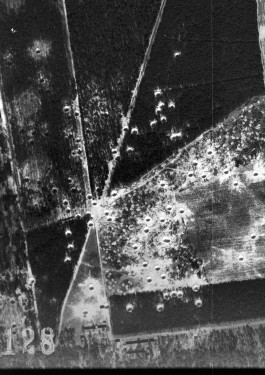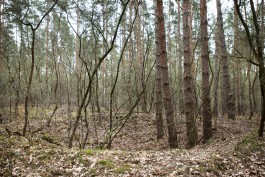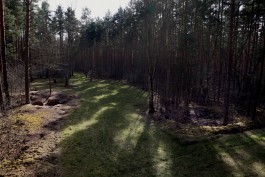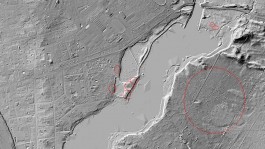






BIEST
Niederlage
Oranienburg, District Lehnitz, Berlin 2015
Striking topography can entice one to settle in it: it provokes, promises an especial aura, a significant “coming-to-oneself” (Ernst Bloch). And for BIEST too it was an enticing invitation, a provocation to embark into experience, discussion, research, insight, but also into open-endedness. Biest foundational research.
There is nothing one would like so much to avert one’s eyes from as the scenarios of war, in which emotionally deadened moral callousness, utter perversion and de-humanized power are played out. In the course of its historical transformations, war has produced ever new forms of activity and event. The archaeologist of topical events begins to dig in the refuse heap of the media – in newspapers, in the internet, in picture archives. He recalls and re-views the last, precisely the last few decades and finds the battlefields: Israel, Iraq, Afghanistan, Indonesia, Syria, Sri Lanka, Saudi Arabia, Algeria, France, Ireland … the list seems never-ending, and yet encompasses only the “well-documented events” and those which we considered relevant enough to be called “wars”. Just like the archaeologist, he assembles the pictorial artefacts in the hope of being able to discover in the lines and constellations theorems and/or complexes of meaning. Is there an order in war? As one looks through and aligns the pictorial documents with their lacerated vehicles and lacerated bodies, their shattered facades of buildings, their rubble and scattered splinters, one repeated motif imposes itself: the bomb crater. The first impression is one of bleakness and triviality. A deformation as the trace of a mighty act of force. We see neither victims nor perpetrators. The focus on the hole largely blanks out the surroundings with their individual inhabitants and their cultural particularities. The aesthetics of a building site – that’s all. Empty images. Complete and yet incomplete. Can the crater, can these hollowed-out cavities and the violent ousting of all life and all culture, become a symbol of destructivity, become a silent memorial? Depending on the dimensions of the crater, showing the effects may be impressive or comically marginal, since the bomb has inflicted on the earth’s surface hardly more than a scratch. The experience of emptiness, of a loss of orientation, of the past inferno and the apocalypse make the crater landscape not just a symbol of the industrial-military production of destruction – the desert-like quality is a modern form of the sublime. On the other hand, the three-dimensional picture of a hole in the ground that confronts the beholder – at first without any context – is also one of drama-free poverty. Comparable to the gaze into the far distances of a sublime landscape, if one wishes to think in terms of the pictures of Caspar David Friedrich. Inherent both in them and in these images is the riddle as to why they attract the gaze, how exactly they came into being, when they came into being and what one’s own being actually has to do with them. What should the beholder see when he looks into the hollowed-out cavity of a crater?
A shift in perspective is required: so that nothingness can be seen not as nothingness but as meaning, as meta-content. This at least would make a critical potential possible. Only rarely does one see someone who dares to go into the middle of emptiness. Too rarely do we dare to go into the middle of emptiness. As if it required especial daring to venture into the centre of subsided force. It is as if a piece of ruptured earth had a magic of its own, a force which, like the reverberation of an explosion, continues in the realm of the invisible and is able to keep human beings at a distance. A holy or an unholy place? There is something bewildering about staring into emptiness. One gains the impression that the place of nothingness is a place where waiting prevails, waiting for the epiphany or waiting for insight. The hole is the empty tomb. The hole becomes a projection screen or a testing ground for the imagination. Where the latter fails, the hole nevertheless exerts a pull on the human gaze, which becomes immersed in this uncanny, eerie place. The place is uncanny because – in Freud’s words – it reveals itself to be a place which one knows one’s way around. Behind one the known, before one devastation, a wide open gullet that has already devoured its victims. The uncanny provokes the desire for the hidden, the secretive and is nevertheless familiar and conveys a sense of security. The spectacular event, for sure, is over. The hole in the ground is transformed into pullulating life that is stronger than any destruction – indeed, isn’t it as so often destruction that brings life about?
Photo: Ina Schoenenburg/OSTKREUZ
Straight-evaluation report: Ausschnitt Luftaufnahme Lehnitz, PUBLIC-RECORD OFFICE LONDON 22.03.1945
DGM-representation: Landesvermessungsbehörde LGB, 2012








